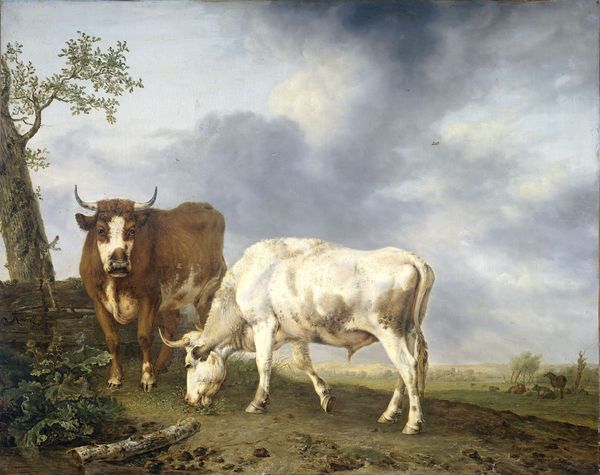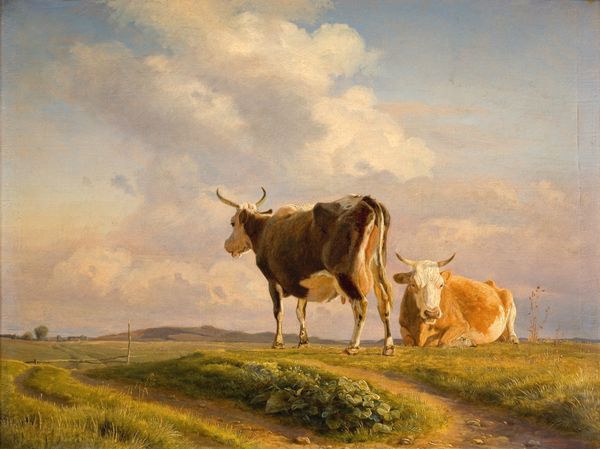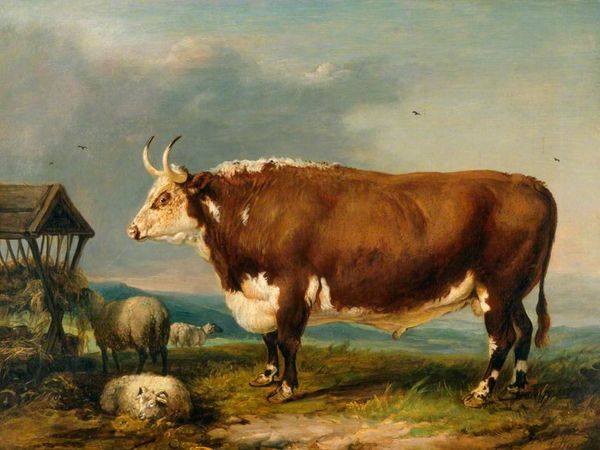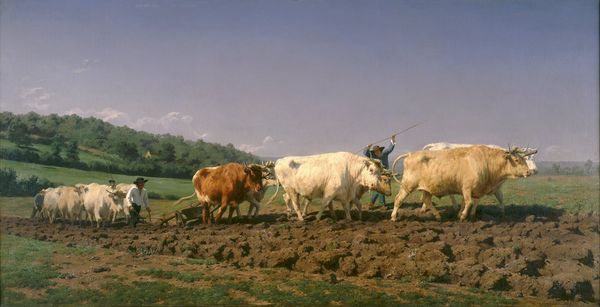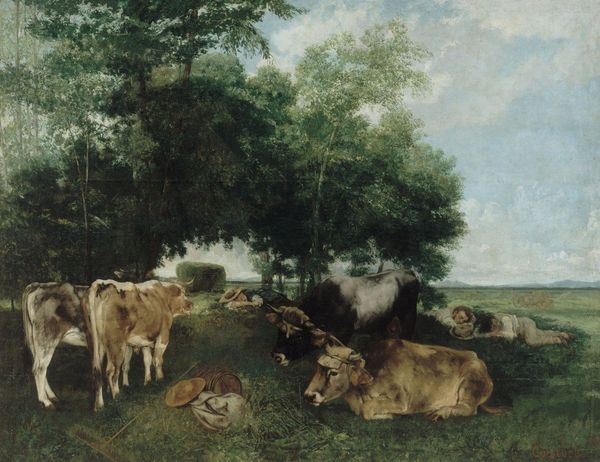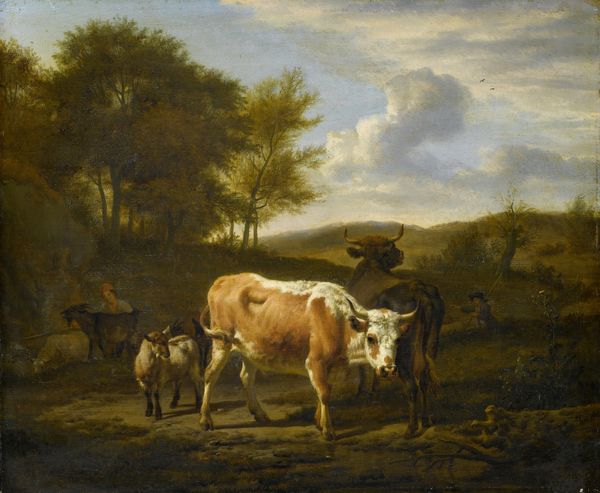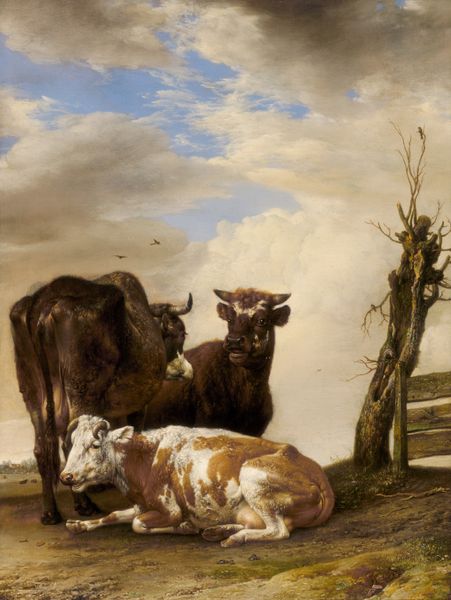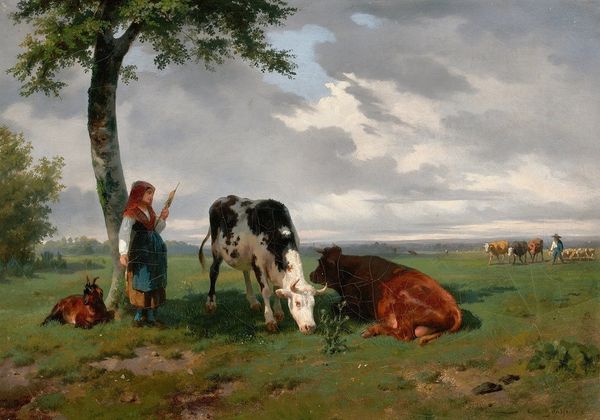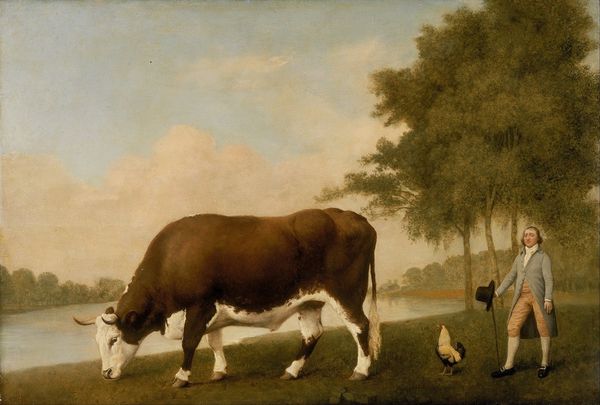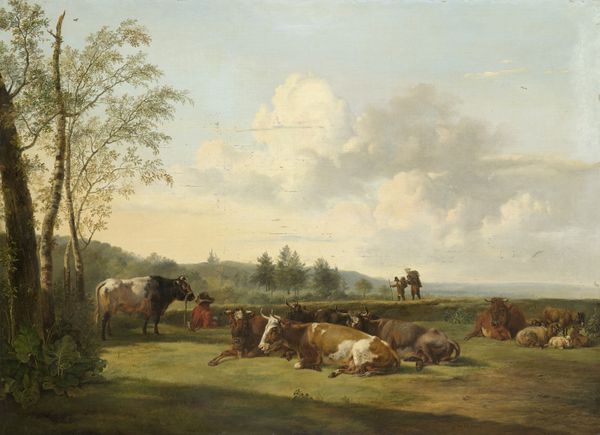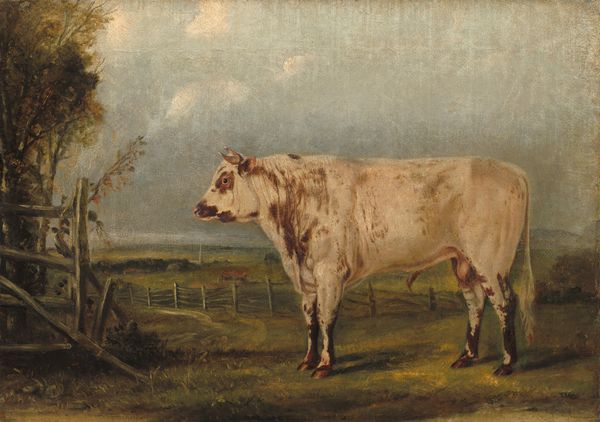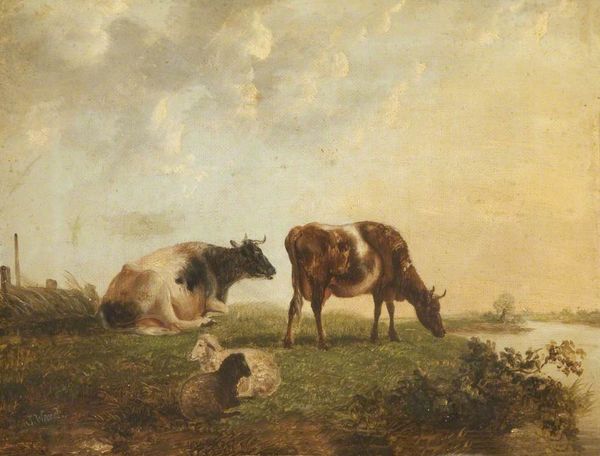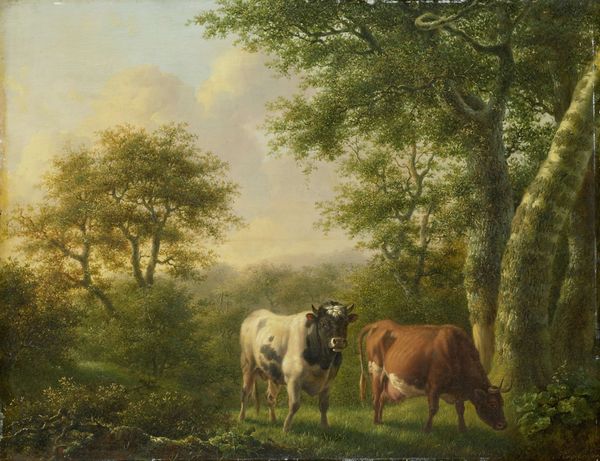
painting, oil-paint
#
portrait
#
painting
#
oil-paint
#
landscape
#
oil painting
#
romanticism
#
animal portrait
#
genre-painting
#
realism
Copyright: Public domain
Curator: Rosa Bonheur's painting, "Three Cows in the Pasture", presents a serene depiction of bovine life, rendered in oil paint. Editor: It's charming! There's something fundamentally comforting about the composition. The diagonal placement of the cows against the backdrop of that expansive sky is surprisingly dynamic. Curator: The composition is indeed interesting. Observe how the horizon line is relatively high, allowing the sky to dominate. It's a typical feature in landscape paintings. This placement, paired with the relative tonal simplicity, directs our eyes down toward the earth and renders those earthy forms very central to its overall narrative. Editor: Precisely. The artist manipulates our focus. But beyond formal elements, consider how this idealized depiction of pastoral life, painted during a time of rapid industrialization, offered a potent symbol of nature and stability. Bonheur presented this scene as very noble in bearing and, really, they embody peace. How do the semiotic signs connect with public imagery surrounding animal labor and animal life in France? Curator: That's a valuable consideration. We can delve into how it functions as a symbol beyond a purely visual experience. But also notice how the light gently illuminates the cows' forms, creating a soft, diffused effect. There’s this interplay of light and shadow along their bodies, which serves to highlight their musculature, grounding this idealized imagery through the raw material presence and animal fact. Editor: And look, beyond their muscles: there's no idealization of labor; the cows are resting. And for all the realism suggested by Bonheur's precise painting technique, they convey an idyllic scene that served specific purposes and appealed to particular sensibilities amid vast socio-economic transformations of labor during the second half of the 19th century. I appreciate how the animal figures stand as evidence of these cultural debates! Curator: I suppose you are quite right. When we regard artworks of this period we really need to appreciate the artist's conscious engagement with societal concerns as revealed in visual and material form. Editor: I quite agree, a close viewing alongside an understanding of its production makes this far more than just cows in a pasture.
Comments
No comments
Be the first to comment and join the conversation on the ultimate creative platform.

